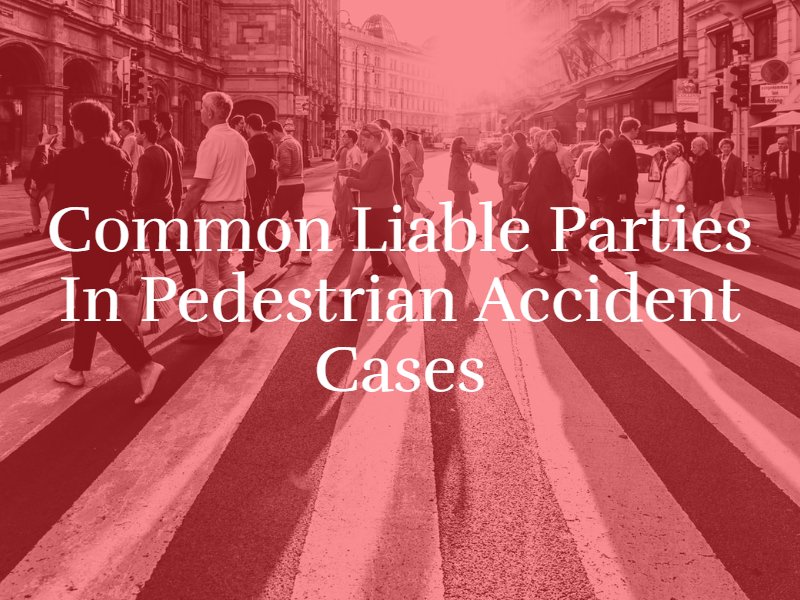Pedestrian accidents cause some of the most serious injuries of all traffic accidents. Pedestrians are vulnerable to severe injuries such as bone fractures, traumatic brain injuries, and spinal cord injuries when hit by motor vehicles. It can be difficult to determine who is responsible for a pedestrian accident. Although the driver of the motor vehicle has more power, pedestrians can also contribute to collisions. Determining liability, or legal and financial responsibility, may require an in-depth case evaluation.
How Is Liability Determined in Texas?
First, it is necessary to understand the car accident liability law in the state where the crash took place. Texas is a tort-based car accident state. Under this law, the party guilty of committing a tort, or wrongdoing, will be liable for the wreck. Common torts are broken roadway rules, speeding, distracted driving, and driving under the influence of alcohol.
The person at fault for the pedestrian accident – or, more often, their insurance company – will be responsible for paying for victims’ injuries, medical bills, and other damages in Texas. This is the opposite of a no-fault state, where all parties file claims with their own insurance companies, regardless of fault for the collision. If you were injured in an accident, you should contact a San Antonio personal injury lawyer to help you navigate the case.

Common Liable Parties in Pedestrian Accident Cases
In 2020, the Texas Department of Transportation reported 717 pedestrian fatalities in traffic accidents. This was about an 8.5 percent increase from 2019. Pedestrian accidents are often preventable. They take place when one or more parties are negligent, or careless. In a pedestrian accident claim, the liable or at-fault party could be:
- The driver. Drivers are often responsible for pedestrian collisions in Texas, especially in busy areas such as downtown San Antonio. Driver errors such as texting while driving and failing to yield a pedestrian the right-of-way increase the risk of pedestrian accidents. All drivers in Texas must carry minimum amounts of liability insurance to pay for any accidents that they cause.
- The driver’s employer. If the driver was on-duty at a company, such as driving for a delivery or rideshare service, the employer may be vicariously liable for the driver’s mistakes. Holding an employer responsible could result in better insurance coverage.
- The pedestrian. A pedestrian can cause or contribute to an accident by breaking traffic laws, ignoring crosswalk signals, jaywalking or walking while distracted. Whether or not the pedestrian will be held fully liable for the wreck, however, will depend on the scenario. The driver may also share a portion of the fault.
- The government. Some pedestrian accidents are caused by road defects, such as poorly designed intersections. If the crash took place on public property, victims may be able to hold the government responsible. On private property, liability may go to the property owner.
Texas uses a modified comparative fault law. Under this law, if a victim is found partially at fault for his or her own injury, the victim’s damages (financial compensation) can be reduced. If a pedestrian contributed to the crash, therefore, the courts may reduce his or her financial recovery by a percentage that matches their degree of fault, up to 50 percent. If the injured party is found more at fault for the accident than the defendant, no recovery is available.
How to Prove Fault for a Pedestrian Accident
During a pedestrian accident claim, it is the injured party’s burden to prove the other party’s fault. Fulfilling the burden of proof requires clear and convincing evidence that the defendant is more likely to be responsible for the pedestrian accident than not. Evidence to support a pedestrian accident case may include eyewitness testimonies, a police accident report, photographs and videos, crash reconstruction, and medical records. A San Antonio pedestrian accident attorney can help a victim collect evidence to build a compelling case against one or more liable parties for a pedestrian accident.
